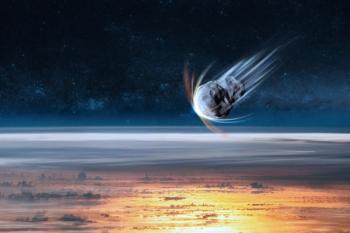
The Common Types of Plastic Found in Lakes
In this brief segment from my full-length conversation with Monica Arienzo of the Desert Research Institute, she discusses the important key findings of her study.
Back in 2023, I conducted an interview with Monica Arienzo of the Desert Research Institute, and we discussed the research she and her group conducted, which involved investigating and classifying polymers in various types of litter that were found on the lakebed of Lake Tahoe (1).
In this brief segment from my full-length conversation with Arienzo, she discusses the important key findings of her study.
Will Wetzel: Could you talk about the results that your team found, and were there any particularly surprising results?
Arienzo: Yeah, I like this question because I was thinking a lot about this. I wasn't sure what to expect from the study. To my knowledge, there wasn't any study like ours that had categorized plastic litter in this method with litter that had been collected by scuba divers. Additionally, Lake Tahoe is an area that's had a lot of environmental stewardship in that area, so it's a place where there's been a lot of discussion historically about litter and keeping Tahoe clean. And so, I honestly wasn't sure what we were going to find. So maybe, I guess in retrospect, I was surprised that we found on average 83 plastic items per kilometer of lakebed. So that was maybe initially surprising, but when we went back and compared our findings to other work that had been done in the marine realm, it turned out that it was in line with what previous studies have shown. And then the other thing is, because we have these litter categories, we can start to ask questions about what types of litter are being disposed of improperly and ending up in the Lake Tahoe lakebed? I was still a little surprised, not only by the amount we found, but also by the dominance of single-use plastics, right? The fact that we saw food containers, bottles, and plastic bags being so prevalent at the bottom of Lake Tahoe was still surprising to me. And then we think about those six most commonly identified polymers, which were polyvinyl chloride, polystyrene, polyethylene terephthalate, polyethylene, polypropylene, and polyamide. These reflect global plastic production trends and are in line with other prior studies on microplastics from sediments and lakes.
You can see the study and my full-length video interview with Arienzo in references (1,2).
References
- Wetzel, W. Polymer Characterization of Plastic Litter Using ATR-FT-IR Spectroscopy: An Interview with Monica Arienzo. Spectroscopy. Available at:
https://www.spectroscopyonline.com/view/polymer-characterization-of-plastic-litter-using-atr-ft-ir-spectroscopy-an-interview-with-monica-arienzo (accessed 2025-04-15). - Davidson, J.; Arienzo, M. M.; Harrold, Z.; West, C.; Bandala, E. R.; Easler, S.; Senft, K. Polymer Characterization of Submerged Plastic Litter from Lake Tahoe, United States. Appl. Spectrosc. 2023, ASAP. DOI:
10.1177/00037028231201174
Newsletter
Get essential updates on the latest spectroscopy technologies, regulatory standards, and best practices—subscribe today to Spectroscopy.





